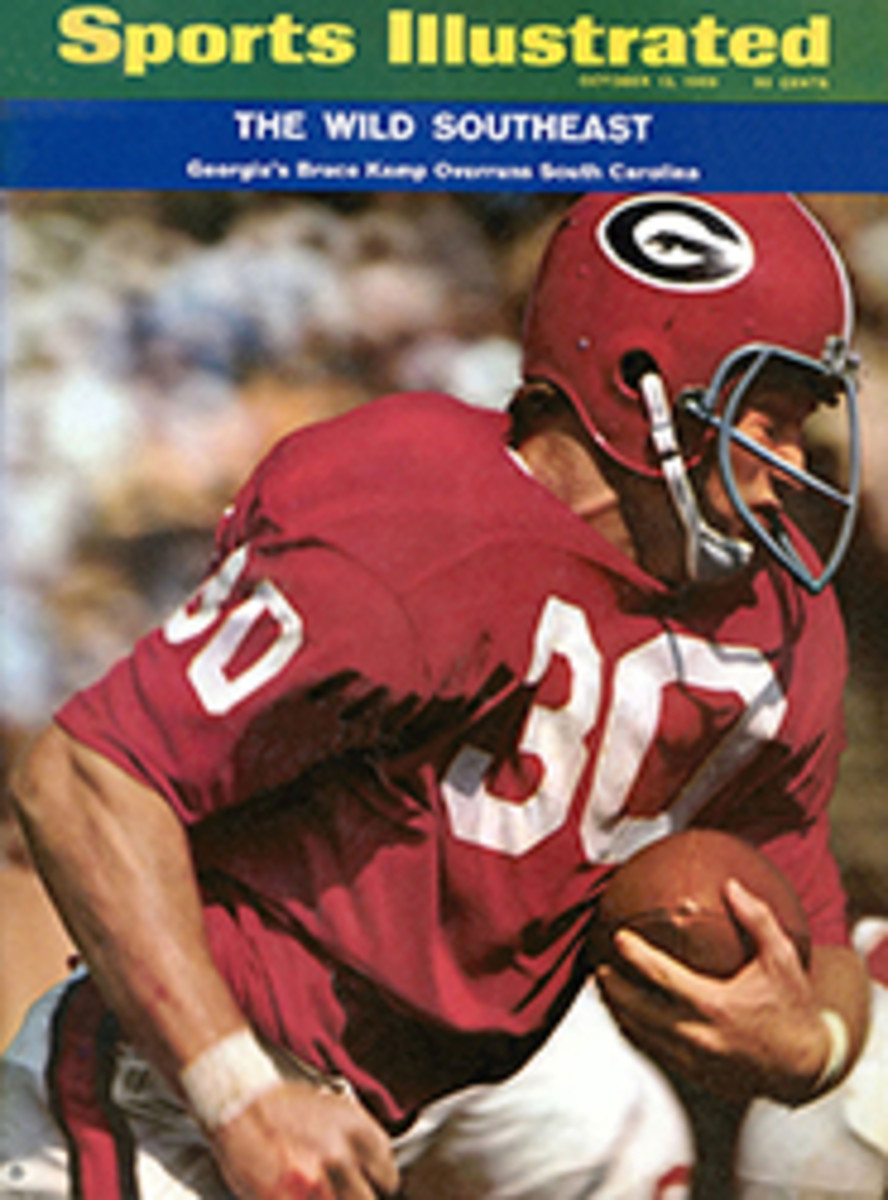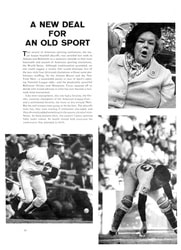
LETTER FROM THE PUBLISHER
Football players inevitably look down on Myron Cope, who stands 5'5" in his sweat socks. Nevertheless, Cope has unabashedly hung around with the pigskin set off and on for 20 years. Bobby Layne, for one, used to invite Cope to join him for a drink at Dante's, a Pittsburgh watering spot favored by the Steelers, and then devote the evening to impassioned diatribes against sportswriters. And Cope, no patsy, learned to fend for himself. With this background in mind, early last winter SPORTS ILLUSTRATED sent Cope off on an assignment that took him 20,000 miles around the country and into the lives of 35 famous old pro football figures. The result of his travels was a few miles of used recording tape, a book—A Very Different Life, to be published by World in 1970—and the two-part series, The Game That Was, that begins on page 86.
Author Cope is enthusiastic about the months he spent in travel and talk, and only slightly less stimulated by some of the travail encountered along the way. There was the bar, he recalls, in Sweetwater, Texas where a husky belligerent in a ten-gallon hat heard Cope say he had just visited Sammy Baugh. He demanded to see Cope's credentials, and then studied the proffered press card in cold silence. "I had the feeling," says Cope, "that I was about to play the role of the television Eastern dude who wanders into an outlaw hideaway town, there to come to a violent end." And in Louisville, Cope met 77-year-old Indian Joe Guyon, who was in his football prime about 1919 but is still ready and eager to do sporting battle. "You just run at me, boy," challenged Guyon, "and I'll floor you."
There were some wistful moments, too. In Willow River, Minn. a bartender had never heard of the famed Ernie Nevers, who was born there. "Well," sighed Johnny Blood, the memorable halfback who had accompanied Cope to the small town, "50 years from now they won't know in Beaver Falls who Joe Namath was."
At least one old pro, Dutch Clark, was apprehensive lest his earthy comments be transcribed by a delicate secretary. Cope decided a white lie would help, and eased Clark's mind with "My typist swears like a sailor herself." This was apparently too much for the demure mother of four who transcribed the tape. She inserted into the manuscript a comment of her own: "Goddammit, Myron, why would you say such a thing about me?"
The pros apparently enjoyed their trip into the past as much as the author. "I am convinced," sums up Cope, who at 40 is getting to be an old pro himself, "that these men took from pro football a strength of character and a sense of humor that probably will escape most of today's players. Life was a struggle, and from that struggle they acquired not only a good deal of iron but the good-humored recognition that they were, for all their athletic talent, insignificant occupants on the face of the earth."
This is the mood, and part of the pleasure, of The Game That Was.
PHOTO
COPE AND OLD PRO FRIEND ART ROONEY

